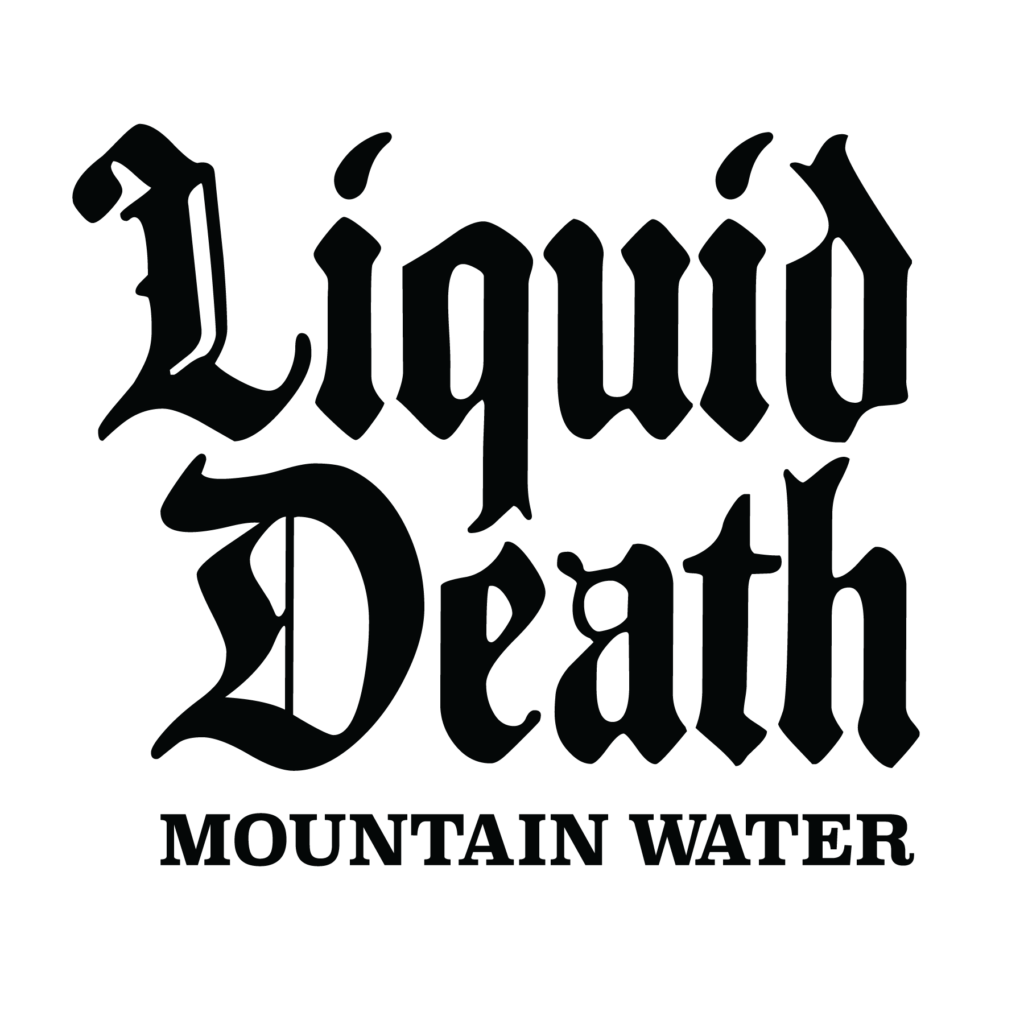
Liquid Death
Liquid Death Water carved out a distinctive niche in the beverage industry with the help of Cascadia Managing Brands. Cascadia crafted a strategic sales plan, assisted in the development of the P&L, budget, brand launch, oversaw brand management and sales for Liquid Death, targeting male youth culture associated with punk rock, heavy metal, skateboarding, and tattoo artistry.
Their efforts culminated in a highly successful online launch that attracted significant media attention. As Liquid Death expanded into select DSD markets and national and regional accounts, Cascadia’s strategic direction proved pivotal, including their recommendation to add sparkling and flavored waters to the product line to enhance shelf presence and create a more impactful sales billboard. The brand’s unique positioning, distinctive aluminum can packaging, and environmental focus resonated particularly well with millennials and Gen Z consumers, propelling Liquid Death to significant success and expansion. U.K., and France.
Read more
Liquid Death has achieved extraordinary financial milestones, raising $189 million across 8 funding rounds and reaching a valuation of $700 million. Their sales leaped from $2.8 million in 2019 to $45 million in 2021, and further to $130 million in 2022. The brand’s differentiation through audacious branding, engagement with uniquely entertaining content, and commitment to social impact have been pivotal in this growth. They are now sold in 60,000 retail locations and lead on Amazon as the top still water and second-best sparkling water brand. Their online presence is formidable, with millions of followers across social platforms and a dedicated loyalty program.
Cascadia Managing Brands executed a strategic sales and distribution plan that included brand management, sales, and facilitated the brand’s expansion into selected markets and accounts, significantly contributing to Liquid Death’s success.
Cascadia Managing Brands began their collaboration with Liquid Death six months prior to the product hitting the market, significantly contributing to the brand’s distribution and sales for a year post-launch. As Liquid Death experienced rapid growth and the demand for an internal sales team became evident, Cascadia transitioned its role. During this change, Cascadia provided critical support in the recruitment and interviewing process for Liquid Death’s new full-time Vice President of Sales.
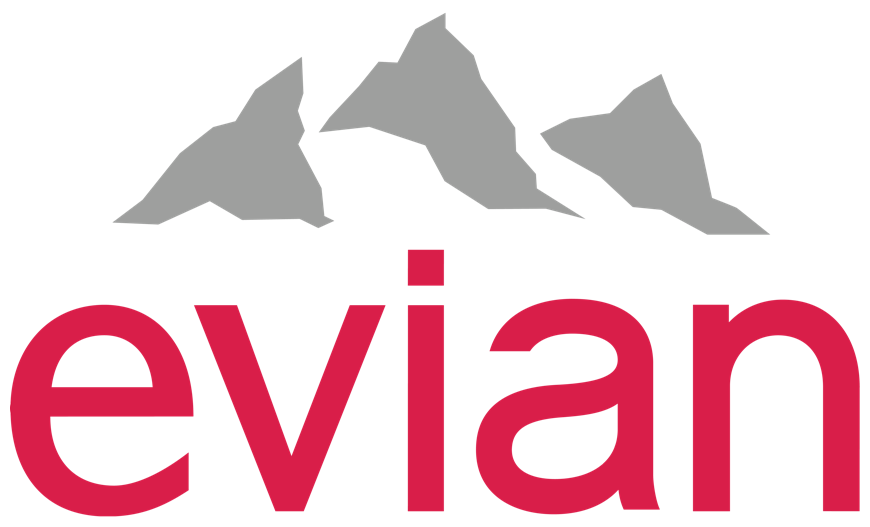
Evian in the United States
Introduction: Evian, a globally recognized premium mineral water brand owned by Danone, embarked on a strategic journey to establish and expand its presence in the United States. This case study explores the pivotal factors behind Evian’s success in the American market, shedding light on its marketing strategies, product positioning, and market penetration efforts.
Background: In the early days of Evian’s entry into the United States, the bottled water market was far from crowded. In fact, the only major bottled water brand widely available in the U.S. at that time was Perrier. This unique market landscape presented both opportunities and challenges for Evian.
When Evian initially launched in the United States, it did so in glass bottles, catering to a niche segment of consumers seeking premium water. However, the real turning point in Evian’s U.S. journey came when the brand introduced its PVC plastic line. This strategic move had a profound impact on the brand’s sales and market share.
The introduction of PVC plastic bottles made Evian’s products more accessible and convenient for American consumers. This shift in packaging materials aligned with evolving consumer preferences for on-the-go hydration and sustainability. As a result, Evian’s sales in the United States exploded, and the brand even encountered shortages in supply to meet the surging demand.
This shift to PVC plastic packaging not only enhanced Evian’s sales but also positioned the brand as a leader in innovation and adaptation to the American market. It underscored Evian’s commitment to meeting consumer needs and preferences while maintaining its reputation for premium quality.
Read more
Fred Sipper and Jack Maguire: Pioneers of Evian in the United States
A significant milestone in Evian’s journey to establish itself in the United States involves the collaborative efforts of Fred Sipper, Bill Sipper’s father, and Jack Maguire, then the CEO of Evian.
Fred Sipper played a crucial role as the first US distributor for Evian. His vision and dedication were instrumental in introducing Evian to the American market. At a time when bottled water was still a niche product in the United States, Fred Sipper recognized the potential of Evian’s premium mineral water. His early involvement paved the way for the brand’s entry and eventual success in the American market.
Alongside Fred Sipper, Jack Maguire, then the CEO of Evian, played a pivotal role in shaping the brand’s strategy for the United States. Together, they formulated a plan to position Evian as a premium, high-quality mineral water choice for American consumers. This collaboration laid the foundation for Evian’s successful entry into the U.S. market.
As bottled water consumption began to gain traction in the United States, the combined efforts of Fred Sipper and Jack Maguire helped Evian navigate the unique challenges of the American market. Their foresight, commitment, and collaborative approach were instrumental in establishing Evian as a trusted and sought-after brand among health-conscious American consumers.
Evian and Saratoga Water: Under the Umbrella of BSN
During this era, both Evian and Saratoga waters were owned by the French conglomerate BSN (Boussois-Souchon-Neuvesel). BSN boasted an extensive and diverse portfolio of products and brands, including iconic names such as Dannon yogurt, Kronenbourg Beer, Lea and Perrins Worcestershire Sauce, and others.
This ownership under the BSN umbrella was pivotal for Evian and Saratoga as it provided them with the backing of a global conglomerate with a rich heritage and a track record of success in various consumer goods categories. This affiliation allowed Evian and Saratoga to leverage synergies, resources, and expertise that contributed to their growth and expansion in the United States.
Bill Sipper’s responsibilities extended beyond Evian alone; he also played a crucial role in promoting Saratoga water in the U.S. market. This dual responsibility showcased his expertise in the premium bottled water sector and contributed to the overall success of these brands in the United States.
These early milestones, including Bill Sipper’s appointment and the support of BSN, laid the foundation for Evian’s enduring presence and success in the United States. They underscored the brand’s commitment to quality, innovation, and effective market penetration, values that continue to be integral to Evian’s strategy in the U.S. market today.
Conclusion: In conclusion, Evian’s success story in the United States showcases the significance of effective product positioning, targeted marketing strategies, and sustainability initiatives. By leveraging its premium image, aligning with influential figures like Bill Sipper, and appealing to eco-conscious consumers, Evian successfully revitalized its presence in the competitive American market. Through continued innovation and a customer-centric approach, Evian is poised to maintain its upward trajectory and solidify its position as a leader in the U.S. bottled water industry.
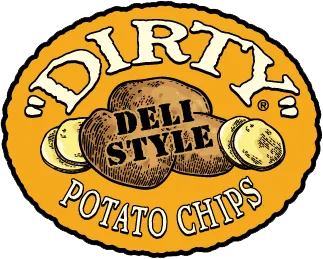
Dirty Potato Chips:
Revolutionizing Snacking through Authenticity and Unconventional Distribution
Introduction: This case study delves into the inspiring journey of Dirty Potato Chips, a family-owned snack brand that disrupted the traditional snack industry by emphasizing authenticity, premium ingredients, grassroots marketing, and an innovative distribution approach. Bob and Bill Sipper, the co-founders of Cascadia Managing Brands, played a pivotal role in bringing Dirty Potato Chips to the highly competitive NYC market and reshaping distribution strategies.
Background: In 1986, Dirty Potato Chips emerged as a testament to a vision: providing a snack experience that transcended the ordinary. Unlike industry giants, this family-operated enterprise placed authenticity at the forefront, employing locally-sourced potatoes and 100% cottonseed oil for handcrafted, small-batch chips.
Read more
The Dirty Potato Chips Difference
Dirty Potato Chips stood out through multiple dimensions:
Quality Ingredients: Commitment to using the finest ingredients ensured an unparalleled flavor and texture in their chips.
Innovative Flavors: Departing from the norm, the brand offered adventurous flavors such as Funky Fusion and Jalapeño Heat, catering to evolving consumer tastes.
Genuine Connection: By positioning themselves as a family-run business, Dirty Potato Chips fostered a connection reminiscent of homemade chips, resonating authentically with consumers.
Marketing Strategy
Dirty Potato Chips employed a grassroots marketing approach that connected with customers:
Local Events and Festivals: Direct engagement with consumers at local events and food festivals cultivated personal connections and built brand loyalty.
Unique Distribution by Cascadia Managing Brands
Bob and Bill Sipper, co-founders of Cascadia Managing Brands, introduced a groundbreaking distribution strategy:
Leveraging their expertise, they secured distribution for Dirty Potato Chips not just in traditional retail outlets but also in unconventional settings like corporate food services, hotels, airports, and street-side vending.
Challenges and Future Outlook
Amid remarkable success, challenges surfaced:
Scaling Production: Meeting escalated demand without compromising on handmade quality posed a challenge, demanding strategic production scaling.
Competitive Landscape: With increased recognition, the risk of imitation loomed. Constant innovation was pivotal for differentiation.
Sustainability: Aligning with eco-conscious consumer preferences necessitated sustainable packaging and sourcing approaches.
Complex Distribution: Managing a distinctive distribution network while ensuring consistent quality necessitated meticulous oversight.
Conclusion
Dirty Potato Chips reshaped snacking norms. Bob and Bill Sipper’s pioneering distribution strategy, as co-founders of Cascadia Managing Brands, played a critical role. Their unwavering commitment to authenticity, quality, and inventive distribution channels continues to shape the snack industry. Despite challenges, the brand’s foundation of authenticity and innovation positions it for sustained success.

Too Good Gourmet Cookies – A Testament to Cascadia’s Food Industry Expertise
Introduction: Too Good Gourmet Cookies, founded in 1999 by Jennifer Finley and her mother Amie, stands as a shining example of success in the food and beverage industry. This case study highlights the remarkable journey of Too Good Gourmet Cookies and emphasizes Cascadia Managing Brands’ role in leveraging their food industry expertise.
A Chance Reunion: Discovering a Delicious Opportunity
The story of Too Good Gourmet Cookies began with a chance reunion that took place over 25 years after Ron Vogler and Bill Sipper had last seen each other. It unfolded at the prestigious Fancy Food Show, where industry professionals converged to showcase their culinary delights.
At the Fancy Food Show, as Bill Sipper strolled down the aisles, he heard someone call out, “Billy!” The nickname “Billy” had been reserved for friends from his primary and high school years, and he wondered who could be calling him by that name. To his surprise, it was Ron Vogler, whom he hadn’t seen in over 25 years.
Read more
Reconnecting through History: From Deer Park Spring Water to Too Good Gourmet
Bill and Ron’s history included a successful collaboration during Ron’s tenure as Vice President of Sales at Clorox, where they launched Deer Park Natural Spring Water in PET bottles. This shared experience added an extra layer of familiarity and trust to their reunion. Notably, Bill and Bob were the exclusive distributors for Deer Park Spring Water in 26 metropolitan counties, covering areas including New York City, Westchester, Long Island, and Northern and Central New Jersey.
Pioneers in the Industry: The Sipper’s Legacy
It’s worth noting that the Sipper’s legacy in the food and beverage industry includes their early involvement as pioneers and distributors for renowned brands such as Bonne Maman and Sorrel Ridge preserves, Amedei, Droste, Lindt, and Toblerone (now owned by Mondelez International) Chocolate, Dirty Potato Chips (now owned by Utz Quality Foods), Caesar Cardini Salad Dressing, Pirate’s Booty Puffs (now owned by B & G Foods), and many more. Their deep industry knowledge and experience have been invaluable assets in their journey with Too Good Gourmet.
Strategies for Success:
Too Good Gourmet’s remarkable rise to prominence can be attributed to several key strategies:
Quality and Innovation: Too Good Gourmet maintained a steadfast commitment to crafting high-quality, innovative cookies that catered to evolving consumer preferences, such as their popular Keto Cookie.
Conclusion:
Too Good Gourmet Cookies’ journey, driven by its founders’ passion and enhanced by the strategic collaboration with Cascadia Managing Brands, exemplifies the power of expertise and partnership in the food industry. This case study underscores Cascadia’s ability to leverage its food industry knowledge and contribute to the success of innovative food brands like Too Good Gourmet Cookies, all sparked by a chance reunion at the Fancy Food Show and enriched by the Sipper’s pioneering legacy in the industry.
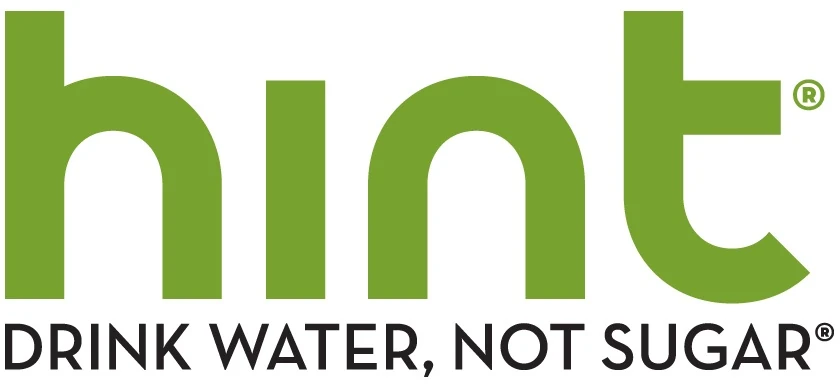
Hint Case Study: Revised Case Study:
HINT Water’s Meteoric Rise with Cascadia Managing Brands
Title: “A Splash of Success: How Cascadia Managing Brands Quenched HINT Water’s Thirst for Market Domination”
Introduction:
In the landscape of sugary beverages, HINT Water stood out with its refreshing simplicity – pure water infused with a touch of natural fruit flavor. This revolutionary product found its perfect partner in Cascadia Managing Brands, a leader in brand management and marketing, to make a monumental splash in the beverage industry.
Read more
The Challenge:
HINT faced the daunting task of breaking into a saturated market and convincing consumers to embrace a subtler, healthier beverage option.
Cascadia’s Strategy:
Cascadia’s strategy was laser-focused on launching HINT Water through Direct Store Distributors (DSD), which are independent beverage distributors. Some DSD distributors include prominent names like Coca-Cola, Pepsi, Dr. Pepper Keurig, Anheuser Busch, Molson Coors, and more. This approach ensured widespread distribution and accessibility for HINT Water across diverse channels.
Significant Milestone:
A pivotal moment in HINT’s journey was the investment from Verlinvest in April 2008″‹”‹. This investment was a testament to HINT’s potential and a catalyst for further growth and expansion.
The Results:
Robust Growth: Cascadia’s laser-focused approach on DSD distributors led to exponential sales growth and a substantial increase in market share.
Elevated Brand Recognition: HINT evolved from a niche product into a household name, synonymous with health and innovation.
Successful Transition: After four years of aggressive marketing and brand building, HINT transitioned to an in-house sales team, a move that demonstrated the robust platform established by Cascadia.
Conclusion:
Cascadia Managing Brands didn’t just assist HINT; it propelled it to new heights through strategic partnerships with DSD distributors. This approach showcased the power of vision meeting expertise, creating not just ripples but waves in the industry.
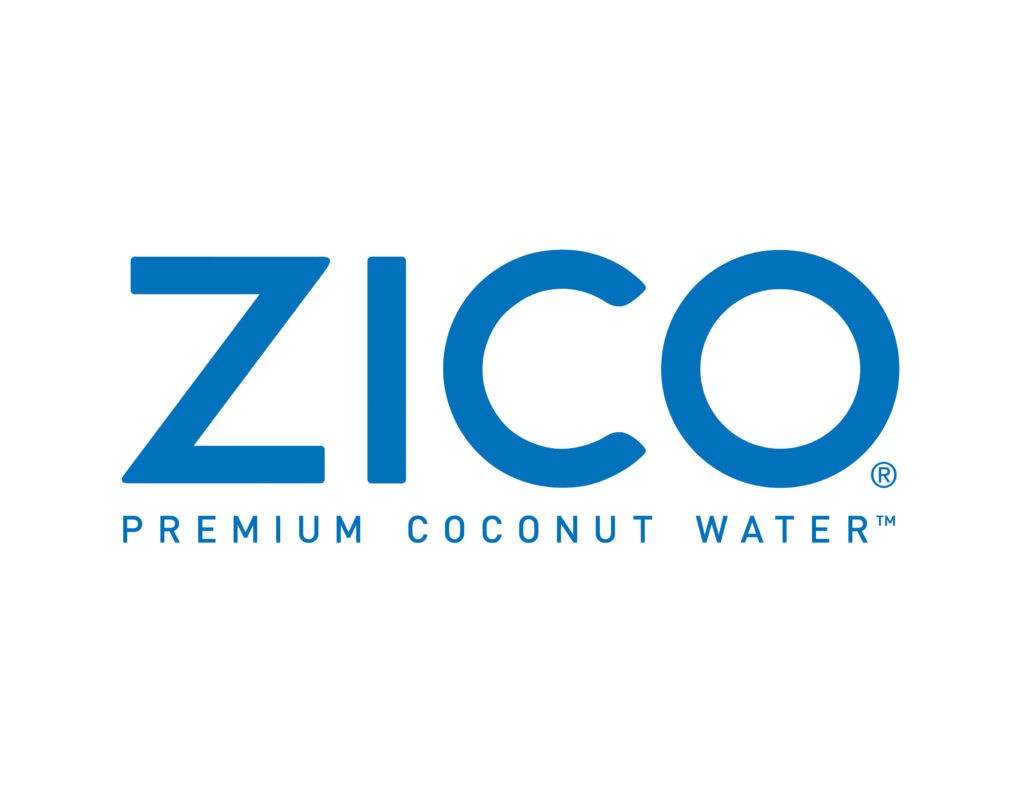
Zico Case Study: Zico Coconut Water –
A Revolutionary Journey with Cascadia Managing Brands
In the fiercely competitive landscape of the beverage industry, the story of Zico Coconut Water stands out as a testament to innovative marketing, strategic positioning, and a partnership that changed the rules of the game. Partnering with Cascadia Managing Brands, Zico embarked on a journey that would see it transform from a niche product into a household name across the United States.
The Challenge
The primary challenge for Zico was penetrating a market saturated with traditional and established beverage options. The task was not just to introduce a new product but to create and dominate a new category in the beverage market – coconut water.
Read more
Cascadia’s Strategic Approach
Cascadia Managing Brands, with its deep expertise in brand management and marketing in the food and beverage industry, devised a multifaceted strategy:
Market Analysis and Positioning: Cascadia conducted thorough market research to identify potential consumer segments for Zico. The focus was on health-conscious consumers looking for natural hydration options.
Distribution Expansion: Cascadia leveraged its vast network to introduce Zico to an array of retail outlets, including supermarkets, natural specialty food stores, DSD and natural food distributors, and convenience stores. This broad approach ensured maximum visibility and accessibility for the brand.
Innovative Marketing: Recognizing the power of brand storytelling, Cascadia crafted a compelling narrative around Zico. The marketing campaigns highlighted the natural benefits, exotic origins, and the purity of Zico Coconut Water.
Engaging Retailers and Distributors: Cascadia didn’t just sell a product; they sold a vision. Retailers and distributors were made part of a revolutionary health trend, increasing their enthusiasm and commitment to the brand.
The Results
The impact was phenomenal. Zico rapidly gained popularity, not just as a beverage but as a lifestyle choice. The strategic distribution ensured that Zico was available where its target consumers shopped – from the largest supermarkets to the corner convenience store.
The Sale
The crescendo of this journey was the acquisition of Zico by a major beverage conglomerate. This move was not just a business transaction; it was a validation of the vision, strategy, and execution that Cascadia Managing Brands brought to the table.
Conclusion
Zico’s journey with Cascadia Managing Brands is a case study in visionary brand management and marketing. It showcases how a nuanced understanding of the market, strategic distribution, and innovative marketing can not only introduce a new product but also create and dominate a new category in the competitive food and beverage industry.
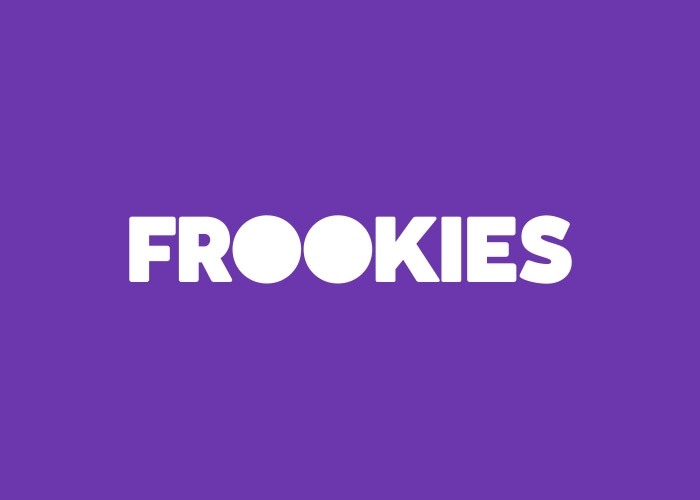
Frookie’s Cookies Case Study
Founders and Launch
Frookies Cookies, the pioneering sugar-free cookie brand, was owned by food industry pioneer Richard Worth. Worth, known for his innovative approach to healthier food options, ventured into the creation of Frookies Cookies to address the need for sugar-free cookies in the market. The Sipper brothers, Bill and Bob Sipper, played a significant role as the first distributors for Sorrel Ridge Preserves, another creation of Richard Worth, which shared the same commitment to sugar-free products.
Continuous Product Development
Frookies Cookies, under the guidance of Richard Worth, maintained an unwavering dedication to continuous product development and improvement. They actively sought customer feedback and incorporated it into their recipe refinements, ensuring that their sugar-free cookies evolved to meet the changing tastes and preferences of their target market. This commitment to ongoing innovation allowed Frookies Cookies to stay ahead of competitors and maintain their position as a leader in the sugar-free cookie market.
Read more
Health and Nutrition Focus
Health and nutrition were at the heart of Frookies Cookies’ brand identity. In addition to being sugar-free, their cookies were crafted using wholesome, natural ingredients, entirely free from artificial additives or preservatives. The company prioritized providing comprehensive nutritional information, highlighting the low sugar content, and showcasing the benefits of their cookies as part of a balanced and healthy lifestyle.
Collaboration with Health Professionals
To enhance their credibility and appeal to health-conscious consumers, Frookies Cookies continued their collaborations with health professionals, nutritionists, and dieticians. These partnerships encompassed endorsements, collaborative recipe development, and the creation of educational content. Such initiatives reinforced the brand’s commitment to health and received expert validation for their products, further building trust among consumers.
Expansion into Retail Partnerships
With the increasing demand for their sugar-free cookies, Frookies Cookies expanded their distribution channels to include partnerships with mainstream retail establishments. By entering agreements with supermarkets, health food chains, and specialty stores, they significantly enhanced the accessibility of their products to a broader spectrum of consumers. This strategic move into traditional retail further solidified their market presence and contributed to significant sales growth.
Summary
Frookies Cookies, founded by Richard Worth and distributed by Bill and Bob Sipper, blazed a trail in the food industry with their sugar-free cookies. Their unwavering commitment to continuous product development and innovation, along with a strong focus on health and nutrition, established Frookies Cookies as a leader in the sugar-free cookie market. Collaborations with health professionals and strategic retail partnerships further solidified their position. The legacy of Frookies Cookies continues to inspire the industry, demonstrating the possibilities of healthier alternatives in the food market.

Nantucket Nectars Case Study: Nantucket Nectars:
Sailing to Success in the Beverage Industry
Nantucket Nectars is a remarkable example of entrepreneurial success, a story that begins in 1990 on the idyllic Nantucket Island. Tom First and Tom Scott, affectionately known as ‘the Toms’, embarked on a journey that would take them from a simple idea of selling homemade juice blends from a boat to establishing a major national brand.
The Founding Vision
The venture began with a modest boat and a big dream. The Toms, driven by a passion for quality and authenticity, started selling their unique juice blends to locals and tourists. Their approach resonated with consumers, rapidly building a loyal following. This initial success laid the foundation for the brand’s expansion.
Read more
Building a Strong Team and Culture
Central to the success of Nantucket Nectars was the culture and team built by Tom and Tom. They combined the energy and innovation of young, talented individuals with the wisdom of seasoned industry veterans. This blend of youth and experience created an environment that fostered creativity, passion, and dedication, driving the brand’s growth and popularity.
Strategic Expansion
As the brand grew, so did its challenges and opportunities. In 1995, the team expanded to include Bill Sipper as the Director of National Sales, bringing in his expertise and industry relationships. As the company’s 13th employee, Sipper’s role, while not the focal point of their success, contributed valuable insights to the company’s expanding operations.
Market Positioning and Marketing Strategies
In the marketplace, Nantucket Nectars carved out its niche as a premium juice brand. The marketing strategies focused on the unique story of its founders and the allure of Nantucket, effectively capturing the imagination of a broader audience.
Overcoming Industry Challenges
In a market dominated by larger companies, Nantucket Nectars maintained its commitment to quality, helping to sustain a strong market presence. The brand navigated the complexities of scaling up while preserving the integrity and quality of its products.
Culmination and Future Outlook
The journey of Nantucket Nectars culminated in its acquisition by a major player in the beverage industry, a testament to its success and the potential for future growth.
Conclusion
Nantucket Nectars, from its humble beginnings on a boat in Nantucket to becoming a nationally recognized brand, is a story of entrepreneurial vision, quality products, and a unique company culture. The brand continues to inspire in the dynamic world of food

Fresh Samantha Case Study:
In the verdant heart of New England, where each season paints a new portrait of natural beauty, the story of Fresh Samantha Smoothies began. Abby Levin, an artist with a gift for vivid expression, brought to life the essence of the brand through her captivating label designs. Each bottle was more than just a container; it was a canvas, telling a story of freshness, health, and the joy of nature’s bounty.
As Fresh Samantha carved its niche in the local market, buoyed by Abby’s artistic flair, a transformative chapter unfolded with the arrival of Bill Sipper around 1998. Joining as the Vice President of Sales, Marketing, Operations, and Logistics, Bill was poised to propel Fresh Samantha from regional fame to national prominence. Armed with deep experience and strategic insight, Bill embarked on an ambitious expansion, setting the stage for Fresh Samantha to blossom into a household name.
Read more
Under Bill’s leadership, a period of significant growth ensued. He introduced refrigerated warehouses and trucks, meticulously ensuring the smoothies maintained a stable temperature of around 36 degrees Fahrenheit from production to retailers. This attention to detail in temperature control was essential in upholding the brand’s commitment to freshness and quality.
Bill’s strategic expansion saw Fresh Samantha’s presence spread across key locations in the United States:
– *Maine*: A natural extension of their New England roots.
– *Boston, Massachusetts*: A vibrant city with a responsive market.
– *Western Massachusetts*: Tapping into a diverse consumer base.
– *Brooklyn, New York*: Aligning with the borough’s trend-setting culture.
– *New Jersey*: Vital for penetrating the populous regions around New York City.
– *Philadelphia, Pennsylvania*: Rich in history and diversity, a perfect fit for their expansion.
– *Maryland*: Strengthening their Mid-Atlantic region presence.
– *North Carolina*: Reaching a growing southern market.
– *Georgia*: Entry into Atlanta, key for capturing the southeastern market.
– *Florida*: A crucial market known for its large population and vibrant lifestyle.
Amidst this expansion, Fresh Samantha faced a formidable competitor: Odwalla. As Odwalla expanded from the West Coast, following Whole Foods into the East, a dynamic rivalry unfolded. But Fresh Samantha, with its strong local roots and Bill’s strategic leadership, not only faced this challenge but leapfrogged over Odwalla to become the premier smoothie brand on the East Coast.
In an intriguing twist, Fresh Samantha and Odwalla, once rivals, merged. This merger marked the convergence of two visionary brands, creating a powerful entity in the health beverage industry. This union combined Fresh Samantha’s local appeal with Odwalla’s national presence, leading to an even stronger brand.
The climax of this remarkable story came with the acquisition of this merged entity by Coca Cola. This move by one of the world’s beverage giants was a testament to the success, innovation, and loyal customer base built by Fresh Samantha and Odwalla. For Coca Cola, it was a strategic entry into the health-conscious market; for Fresh Samantha and Odwalla, it marked the culmination of a journey characterized by passion, creativity, and strategic foresight.
The narrative of Fresh Samantha, from its inception in a New England kitchen to becoming part of a global beverage empire, embodies the essence of innovation, commitment to quality, and the relentless pursuit of excellence in the world of healthful beverages. Abby Levin’s artistic vision, combined with Bill Sipper’s strategic expansion, crafted a story that transcends the boundaries of business, marking an enduring legacy in the beverage industry.
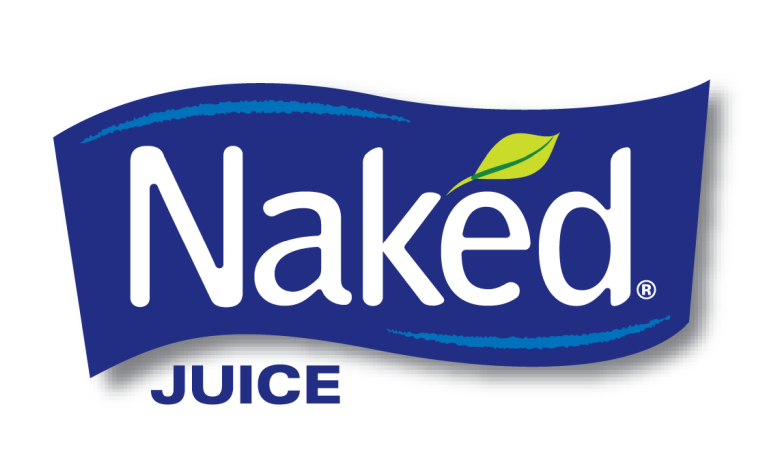
Naked Juice Case Study: The Strategic Evolution of Naked Juice
Introduction
Naked Juice’s transformation from a small local juice producer to a globally recognized brand in the beverage market is a remarkable example of strategic development, market adaptation, and effective leadership. This case study delves into the pivotal milestones and management decisions that fueled Naked Juice’s impressive growth.
Founding and Early Growth
Founded in 1983 in Santa Monica, California, by Jimmy Rosenberg and David Bleeden, Naked Juice quickly established a reputation for its all-natural, preservative-free juices and smoothies. The brand’s commitment to health and quality resonated with an emerging demographic of health-conscious consumers.
Read more
Expansion and Diversification
Building on its early success, Naked Juice expanded its product range, introducing innovative flavors and blends. This diversification strategy played a critical role in attracting a wider customer base and establishing the brand in the growing health and wellness beverage sector.
Acquisition by North Castle Partners
Naked Juice’s growth and potential attracted the attention of North Castle Partners, a venture capital firm specializing in health, wellness, and lifestyle businesses. The acquisition by North Castle Partners marked a significant phase in Naked Juice’s journey towards becoming a nationally recognized brand.
Formation of The Ultimate Juice Company
Under North Castle Partners, Naked Juice was integrated into The Ultimate Juice Company, alongside various other beverage brands. This strategic consolidation allowed for shared resources, unified marketing strategies, and an expansion of distribution channels, contributing significantly to Naked Juice’s growth.
Strategic Leadership and Growth
Around 2003, North Castle Partners brought together a high-caliber leadership team for The Ultimate Juice Company. This team included Rick Suchenski (formerly of Frito Lay), Ken Romanzi, Al Gever, Joel Goldberg (all former executives at Nabisco), and Bill Sipper. Bill Sipper, serving as Vice President of Marketing for all brands within The Ultimate Juice Company, played a crucial role in developing comprehensive marketing strategies that elevated the visibility and appeal of each brand, including Naked Juice.
Under this leadership, Naked Juice experienced substantial growth, driven by innovative product development, effective marketing campaigns, and an expanded distribution network, leading to increased sales and a stronger market presence.
Acquisition by PepsiCo
The culmination of Naked Juice’s growth and success was its acquisition by PepsiCo. This move highlighted the brand’s considerable market value and potential for expansion within a global corporate framework. Under PepsiCo, Naked Juice not only solidified its market position but also opened new opportunities for growth and innovation.
Conclusion
Naked Juice’s journey from a small juice provider to a significant player in the international beverage industry highlights the impact of strategic brand management, market responsiveness, and visionary leadership. This case study provides an insightful example for the food and beverage industry, illustrating how effective brand stewardship and strategic business decisions can elevate a brand to significant heights in a competitive marketplace.
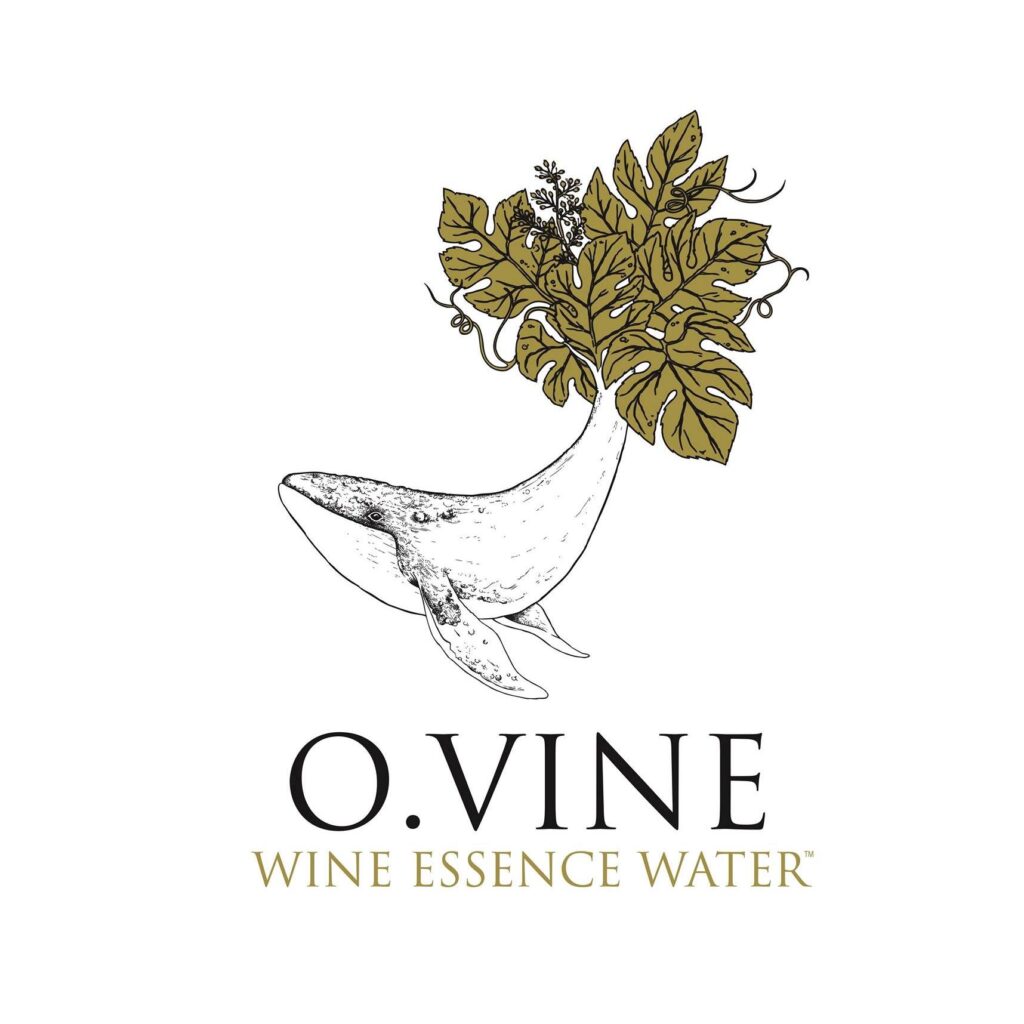
O.Vine Wine Essence Water
O.Vine Wine Essence Water was an innovative product from Wine Water Ltd., offering a non-alcoholic beverage experience with wine grape essence. This case study reflects on the product’s historical market reception, sales performance, and marketing strategies.
Product Launch and Market Reception: O.Vine was introduced with Chardonnay and Cabernet Sauvignon essence waters at the Summer Fancy Food Show in New York. It was distinguished by its lack of preservatives and synthetic colors, gaining attention for its natural ingredients derived from wine grape skins and seeds.
Sales Performance and Expansion: The brand initially served the U.S. market through online platforms such as Beverage Universe and was stocked in-store at Neiman-Marcus in New York. There were ambitions to broaden its presence in high-end retail stores in the U.S., the U.K., and France.
Read more
O.Vine later expanded its packaging to 700ml bottles to cater to the “Sober Curious” movement and launched in the U.S. across health food retailers, high-end restaurants, and hotels. The product is also featured on private jet service menus. O.Vine’s marketing strategies appear to focus on creating a sophisticated, health-conscious image that appeals to a generation looking for the social experience of drinking without the alcohol.
Marketing Strategy and Consumer Engagement: In line with millennials’ preferences, O.Vine’s marketing aligned with the demand for organic products and environmental respect. The company leveraged this trend, emphasizing its appeal to those seeking non-alcoholic yet sophisticated beverage alternatives.
Innovation and Product Development: O.Vine’s unique selling proposition was its upcycled wine grape components, offering antioxidant benefits in a sustainable form. The beverages were available in single-serve 350ml bottles and later in designer 700ml bottles, catering to the upscale U.S. food retail sector, with availability in selected natural food stores and on Amazon.
Market Challenges and Opportunities: A shift in consumer habits, especially among millennials who were practicing more mindful drinking, presented an opportunity for the brand. However, the company noted a drop in wine sales and a rising trend in sobriety, suggesting a growing public interest in health-conscious and sophisticated beverage alternatives.
Cascadia Managing Brands played a comprehensive role in the development and implementation of sales and marketing strategies, from the initial stages through to the post-launch phases.
Conclusion: O.Vine had strategically positioned itself in a burgeoning market for health and environmentally conscious consumers, creating a new niche in the beverage industry. Despite this innovation, O.Vine ceased operations during the global pandemic.
